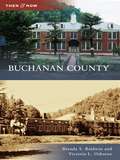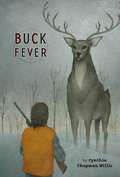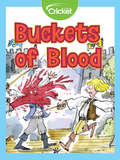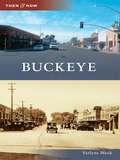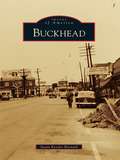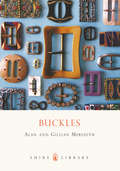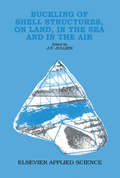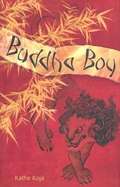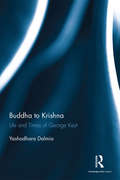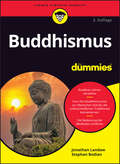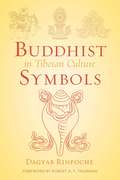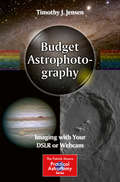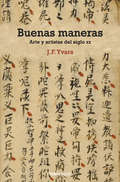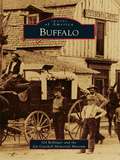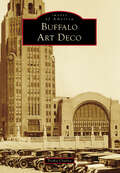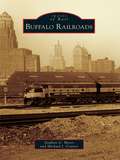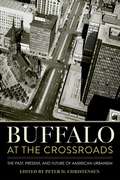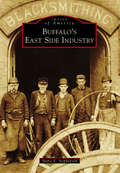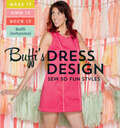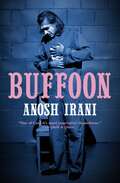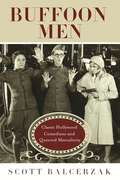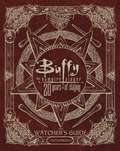- Table View
- List View
Brückenbau beginnt im Kopf: Ingenieursein - mehr als technische Lösungen
by Moritz MengeBauingenieur zu sein ist ein erfüllender Beruf. Bauingenieure gestalten nachhaltige Infrastruktur. Wir errichten Häuser, Straßen, Brücken, Tunnel, Kulturstätten, Türme und vieles mehr. Dafür bringen wir häufig die ganze Ingenieurskunst auf, um solide Lösungen zu erreichen. Und häufig noch mehr, was jenseits der technischen Ingenieurskunst liegt. Das Buch schaut über die technischen Lösungen hinaus in das weitere Umfeld des Bauingenieurs und reflektiert seinen Beruf und die eigene Einstellung aus unterschiedlichsten Perspektiven. „Brückenbau beginnt im Kopf“ bedeutet, sich darauf einzulassen, Verbindungen zu suchen – zu einem ganzheitlichen Berufsbild und seinem Standort als Ingenieur. Wenn der sichere Brückenschlag zum Umfeld des Ingenieurs gelingt, heißt Ingenieursein mehr als perfekte Technik anzuwenden.
Brückenbau beginnt im Kopf: Ingenieursein - mehr als technische Lösungen
by Moritz MengeBauingenieur zu sein ist ein erfüllender Beruf. Bauingenieure gestalten nachhaltige Infrastruktur. Wir errichten Häuser, Straßen, Brücken, Tunnel, Kulturstätten, Türme und vieles mehr. Dafür bringen wir häufig die ganze Ingenieurskunst auf, um solide Lösungen zu erreichen. Und häufig noch mehr, was jenseits der technischen Ingenieurskunst liegt. Das Buch schaut über die technischen Lösungen hinaus in das weitere Umfeld des Bauingenieurs und reflektiert seinen Beruf und die eigene Einstellung aus unterschiedlichsten Perspektiven. „Brückenbau beginnt im Kopf“ bedeutet, sich darauf einzulassen, Verbindungen zu suchen – zu einem ganzheitlichen Berufsbild und seinem Standort als Ingenieur. Wenn der sichere Brückenschlag zum Umfeld des Ingenieurs gelingt, heißt Ingenieursein mehr als perfekte Technik anzuwenden.
Buchanan County (Then and Now)
by Victoria L. Osborne Brenda S. BaldwinBuchanan County, like many small counties, has gone through boom and bust in its history. From floods and fires to economic prosperity, Buchanan went from being one of the wealthiest counties to one of the poorest in the state of Virginia. Unlike many small counties, Buchanan is reinventing itself. The original county is no more and is currently being rebuilt.
Buck Fever
by Cynthia Chapman WillisTwelve-year-old Joey MacTagert's dad wants his son to carry on the family tradition of hunting. But Joey has buck fever -- he can't pull the trigger on a deer, and hates the idea of killing animals. He's more interested in art and hockey, two activities that his dad barely acknowledges. Joey's dad wants him to use his special skill in tracking to hunt down the big antlered buck that roams the woods near their home. Joey knows how to track Old Buck, but has kept secret from his father the reason he's gained the deer's trust. When trouble between his parents seems to escalate, Joey and his older sister, Philly, find themselves in the middle of tensions they don't fully understand. Joey wants to keep the peace, and if conquering his buck fever will do it, he has to try.
Buckets of Blood
by Liz HuyckWhether it's Halloween or just an opportune time for home theatricals, every so often an occasion calls for fake blood. But how do you make fake blood? We have the recipe.
Buckeye
by Verlyne MeckWith a population of more than 48,000, Buckeye is the ninth-fastest growing municipality in the United States. The town's rapid growth has left many longtime residents wondering what happened to the place where they grew up. Originally an agricultural community, Buckeye has embraced the 21st century, becoming a hub for the affordable housing market in the Valley of the Sun. Buckeye's colorful history is told by an Arizona Culture Keeper and lifelong resident of the Buckeye Valley, Verlyne Meck, who has woven a tapestry of words and images that tell the unique story of the Buckeye Valley.
Buckhead
by Susan Kessler BarnardBuckhead, a community four miles from downtown Atlanta, began approximately 6,000 years ago when the Paleo-Indians lived along the Chattahoochee River. By the mid-1700s, the Muscogee (Creek) Indians lived there in the village of Standing Peach Tree. They ceded a major portion of their land to Georgia in 1821, and from that cession came Atlanta and Buckhead. Settlers arrived and operated river ferries, mills, and farms. When Henry Irby opened a tavern in 1838 and hung a buck's head--either over the door or on a yard post--the area became known as Buck's Head. After the Civil War, black neighborhoods, schools, and potteries were established. Around the turn of the century, some Atlanta residents bought land in Buckhead, built cottages, and operated small farms. The streetcar was extended to Buckhead in 1907, and friends followed friends to the community. Images of America: Buckhead is an album of this once quiet rural community before it was annexed to the City of Atlanta in 1952.
Buckles
by Gillian Meredith Alan MeredithThe humble buckle is an oft-taken for granted fastening, yet its usefulness and sturdiness has ensured that it has survived from ancient times through to the present day. The author provides a comprehensive typology of buckles, from the earliest designs to the most recent uses. With detailed records of the types of buckles from different historical periods and listings of museums where they can be found, this book offers the re-enactor essential guidance for period costumes, and provides the collector or enthusiast with the information needed to continue or begin to learning about this enduring and practical object.From the Trade Paperback edition.
Buckling of Shell Structures, on Land, in the Sea and in the Air
by J. F. JullienThis book provides better inputs for improvement of the buckling load predictions of stiffened cylindrical shells subjected to combined loading. It is based on the International Colloquium Buckling of shell structures, on land, in the sea and in the air, Lyon, France, 17 September 1991.
Buddha Boy
by Kathe KojaJustin spends time with Jinsen, the unusual and artistic new student whom the school bullies torment and call Buddha Boy, and ends up making choices that impact Jinsen, himself, and the entire school.
Buddha to Krishna: Life and Times of George Keyt
by Yashodhara DalmiaThis book traces the emergence of modernism in art in South Asia by exploring the work of the iconic artist George Keyt. Closely interwoven with his life, Keyt’s art reflects the struggle and triumph of an artist with very little support or infrastructure. He painted as he lived: full of colour, turmoil and intensity. In this compelling account, the author examines the eventful course of Keyt’s journey, bringing to light unknown and startling facts: the personal ferment that Keyt went through because of his tumultuous relationships with women; his close involvement with social events in India and Sri Lanka on the threshold of Independence; and his somewhat angular engagement with artists of the ’43 Group. A collector’s delight, including colour plates and black and white photographs, reminiscences and intimate correspondences, this book reveals the portrait of an artist among the most charismatic figures of our time. This book will be of interest to scholars and researchers of art and art history, modern South Asian studies, sociology, cultural studies as well as art aficionados.
Buddhismus für Dummies (Für Dummies)
by Jonathan Landaw Stephan BodianDas Glück liegt in Ihnen, nicht in diesem Buch Erfahren Sie, was den Buddhismus für viele so faszinierend macht. Jonathan Landaw und Stephan Bodian führen leicht verständlich in diese fernöstliche Lehre ein. Sie berichten vom Leben des historischen Buddha und von den unterschiedlichen Traditionen, die sich über die Jahrhunderte entwickelt haben. Die Leser lernen, was es mit dem Kleinen (Hinayana) und dem Großen Fahrzeug (Mahayana) auf sich hat, wie sich der Zen-Buddhismus von der tibetanischen Schule unterscheidet und vieles mehr. Außerdem zeigen die Autoren, wie der Buddhismus unseren Alltag bereichert. Sie erfahren Wie Sie in westlichen Kulturen dem Pfad der Erleuchtung folgen Wie der Geist Glück und Leiden erzeugt Was zum Wesen eines Buddhisten gehört Welche Interpretationen der Erleuchtung es gibt
Buddhist Symbols in Tibetan Culture: An Investigation of the Nine Best-Known Groups of Symbols
by Robert Thurman Maurice Walshe Loden Sherap Dagyab RinpocheIn this fascinating study, Dagyab Rinpoche not only explains the nine best-known groups of Tibetan Buddhist symbols but also shows how they serve as bridges between our inner and outer worlds. As such, they can be used to point the way to ultimate reality and to transmit a reservoir of deep knowledge formed over thousands of years.
Budget Astrophotography: Imaging with Your DSLR or Webcam (The Patrick Moore Practical Astronomy Series)
by Timothy J. JensenHere are clear explanations of how to make superb astronomical deep-sky images using only a DSLR or webcam and an astronomical telescope - no expensive dedicated CCD cameras needed! The book is written for amateur astronomers interested in budget astrophotography - the deep sky, not just the Moon and planets - and for those who want to improve their imaging skills using DSLR and webcams. It is even possible to use existing (non-specialist astronomical) equipment for scientific applications such as high resolution planetary and lunar photography, astrometry, photometry, and spectroscopy. The introduction of the CCD revolutionized astrophotography. The availability of this technology to the amateur astronomy community has allowed advanced science and imaging techniques to become available to almost anyone willing to take the time to learn a few, simple techniques. Specialized cooled-chip CCD imagers are capable of superb results in the right hands - but they are all very expensive. If budget is important, the reader is advised on using a standard camera instead. Jensen provides techniques useful in acquiring beautiful high-quality images and high level scientific data in one accessible and easy-to-read book. It introduces techniques that will allow the reader to use more economical DSLR cameras - that are of course also used for day-to-day photography - to produce images and data of high quality, without a large cash investment.
Buenas maneras. Arte y artistas del siglo xx
by J. F. YvarsCon el título de Buenas maneras. Arte y artistas del siglo XX, se reúnen algunos ensayos que J.F. Yvars ha publicado de manera dispersa en catálogos, periódicos y revistas especializadas a lo largo de los últimos cinco años. Unos textos precisos y acerados que aúnan el rigor científico con una clara vocación divulgativa. Un «puñado de indagaciones sobre el arte de nuestro tiempo», en palabras del autor, que apuntan las condiciones del diálogo artístico moderno -de la obra de Torres-García, Pablo Picasso, Giorgio Morandi a Andy Warhol, entre otros- en el excitante momento cultural en que vivimos.
Buffalo
by Gil Bollinger Jim Gatchell Memorial MuseumBuffalo, the county seat of Johnson County in northeastern Wyoming, began in 1878 as an army town adjacent to Fort McKinney (1877-1894). Since that foundation was laid, Buffalo has been witness to gold prospectors and settlers as a waypoint along the Bozeman Trail, nearby battles during the ensuing Indian Wars, and the Cattle War of 1892. Those events and their associated hard times helped forge the town's unique heritage and culture and made its place in American history significant. It was recently referred to as "an epicenter of Western frontier history" by local museum educator Bob Edwards. Buffalo's site, at the boundary between the Big Horn Mountains and the Northern High Plains, is not only historic but particularly beautiful, and it also provides superb grasslands for cattle and sheep ranching. Those industries, plus mining, lumbering, and tourism, make up the community's present-day economy.
Buffalo Art Deco (Images of America)
by Trisha CharlesSeveral movements helped to define the era known as the Roaring Twenties. Prohibition brought about the speakeasy, moonshine, the flapper, and the arrival of the jazz age, while the elegance and glamour of the period permeated design and architecture in the Art Deco or Moderne style. During this time, Buffalo was a hub for transportation, design, music, and manufacturing. Some of the world's finest Art Deco buildings were constructed, and today, Buffalo is still rich with fine examples. City hall, Buffalo's crown jewel of the Art Deco movement, can still be toured daily. Across town, Central Terminal is being restored and revived to its original sophistication and glory. If one is looking for a live jazz show, stop by the Colored Musician Club and be sure to visit the museum. While the Art Deco period was short, other fine examples such as the Rand Building, the Courier Express Building, and the Pierce Arrow Showroom also represent the grandeur of the bygone era.
Buffalo Bill's Wild West Warriors
by Michelle DelaneyA visual pleasure and a unique insight into American history For the first time ever, here is renowned photographer Gertrude KÄsebier's haunting collection of photographs of Native American performers from Buffalo Bill's Wild West show at the turn of the century. One hundred years later, KÄsebier's portraits remain significant visual records into the lives of these Sioux performers and their nation. Her striking photographs capture the strength and character of each individual, documenting the complexity of true warriors playing a staged version of themselves. In 1898, KÄsebier wrote to William F. Cody requesting to photograph Indians performing in his Wild West show at Madison Square Garden. Her photographs proved poignant. Her studio had no elaborate backdrops, and she removed Indian regalia to depict her subjects as "raw" individuals, with strong personalities and experiences that blurred the distinction between traditional life and contemporary times. KÄsebier developed long relationships with several of the Indians, corresponding with a few for many years. Examples of these letters appear in the volume, as well as drawings done by Indians waiting in her studio, photographs of Dakota Sioux on their reservation, little-known historical background, and Wild West show memorabilia, including rare pages from Buffalo Bill's original route book. KÄsebier's photographs are preserved at the National Museum of American History's Photographic History Collection at the Smithsonian Institution.
Buffalo Railroads
by Stephen G. Myers Michael J. ConnorAs a growing city on Lake Erie, Buffalo was considered the second largest railroad hub in the Unites States. Given its location, it saw the effects of westward expansion as the country grew and greatly benefited as a result. Buffalo rapidly became a city of importance as the stockyards, grain, steel, automotive, and other industries began to establish themselves in the area. Drawn by vast amounts of freshwater, inexpensive hydropower, and excellent means of transportation, the Buffalo region grew, and with it, the railroads expanded to support the area and help a young nation prosper. Buffalo earned the name of the Queen City as it became the second-largest city in the state of New York, and it was the railroad that brought the city to prominence.
Buffalo at the Crossroads: The Past, Present, and Future of American Urbanism
Buffalo at the Crossroads is a diverse set of cutting-edge essays. Twelve authors highlight the outsized importance of Buffalo, New York, within the story of American urbanism. Across the collection, they consider the history of Buffalo's built environment in light of contemporary developments and in relationship to the evolving interplay between nature, industry, and architecture.The essays examine Buffalo's architectural heritage in rich context: the Second Industrial Revolution; the City Beautiful movement; world's fairs; grain, railroad, and shipping industries; urban renewal and so-called white flight; and the larger networks of labor and production that set the city's economic fate. The contributors pay attention to currents that connect contemporary architectural work in Buffalo to the legacies established by its esteemed architectural founders: Richardson, Olmsted, Adler, Sullivan, Bethune, Wright, Saarinen, and others. Buffalo at the Crossroads is a compelling introduction to Buffalo's architecture and developed landscape that will frame discussion about the city for years to come.Contributors: Marta Cieslak, University of Arkansas - Little Rock; Francis R. Kowsky; Erkin Özay, University at Buffalo; Jack Quinan, University at Buffalo; A. Joan Saab, University of Rochester; Annie Schentag, KTA Preservation Specialists; Hadas Steiner, University at Buffalo; Julia Tulke, University of Rochester; Stewart Weaver, University of Rochester; Mary N. Woods, Cornell University; Claire Zimmerman, University of Michigan
Buffalo's East Side Industry (Images of America)
by Shane E. StephensonBy 1832, when Buffalo was incorporated as a city, the East Side represented a vast forested area and farmland cut with the beginnings of the major arterials of Genesee, Sycamore, Broadway, William, Clinton, and Seneca. These streets were laid out in 1826 and represented the seeds of the East Side's explosive growth. Along these radial thoroughfares, the development of railroads and the Buffalo Belt Line, constructed in 1883, created a semicircle pattern that outlined the East Side. Industries began sprouting up, eager to use their proximity to the belt line to transport wares all over the country. Immigrants from Germany, Poland, and Ireland, along with African Americans from northern and southern states, began establishing their lives around these industries. Access to land, water, roads, and rail lines and eager immigrants and natives looking for work led to the development of Buffalo's East Side industry, an immensely diverse industrial base and workforce.
Buffi's Dress Design: Make It, Own It, Rock It
by Buffi JashanmalShow off your style with eye-catching homemade dresses. In this fun, easy-to-follow guide, Project Runway contestant Buffi Jashanmal shows you how to create your own custom-fitted dresses or revamp a piece that’s already hanging in your closet. Learn to design personalized patterns for three basic dress shapes — the shift, the sheath, and the princess seam — and make them rock by exploring variations with measurements and fabric types. Your dresses will fit your body, suit your taste, and express your individuality.
Buffoon
by Anosh IraniThree-time Governor General’s Literary Award–shortlisted author and playwright Anosh Irani’s critically acclaimed one-man show Buffoon is a masterclass of tragicomic theatre. Born to circus folk who prefer trapezing over parenting, Felix quickly learns to turn life’s misfortunes into jokes. His longing for family and home is piqued at the tender age of seven when he falls hopelessly in love with an older woman, the beguiling Aja, who is eight. In the process, a clown is born, and we watch him grow into a middle-aged buffoon. Over time, Felix stops waiting for someone else to love him; his journey becomes one of loving himself. A story of love, loss, and the fate that binds us, Buffoon is a gut-wrenching one-man show that expertly walks the tightrope between heartbreak and hilarity.
Buffoon Men: Classic Hollywood Comedians and Queered Masculinity
by Scott BalcerzakFilm scholars and fans have used distinctive terms to describe the Classic Hollywood comedian: He is a "trickster," a "rebel," or a "buffoon." Yet the performer is almost always described as a "he." In Buffoon Men: Classic Hollywood Comedians and Queered Masculinity, Scott Balcerzak reads the performances of notable comedians such as W. C. Fields, Eddie Cantor, Jack Benny, Stan Laurel and Oliver Hardy, Bert Wheeler and Robert Woolsey, and Bud Abbott and Lou Costello through humor and queer theory to expose a problematic history of maleness in their personas. He argues that contrary to popular notions of Classic Hollywood history, these male comedians rearranged or, at times, rejected heteronormative protocols. Balcerzak begins by defining the particular buffoonish masculinity portrayed by early film comedians, a gender and genre construct influenced by the cultural anxieties of the 1930s and '40s. In chapter 1, he considers the onscreen pairing of W. C. Fields and Mae West to identify a queered sexuality and drag persona in Fields's performance, while in chapter 2 he examines the two major constructions of Fields's film persona-the confidence man and the husband-to show Fields to be a conflicted and subversive figure. In chapter 3, Balcerzak considers the assimilation and influence of Eddie Cantor as a Jewish celebrity, while he turns to the cross-media influence of Jack Benny's radio persona in chapter 4. In Chapters 5 and 6, he moves beyond the individual performer to examine the complex masculine brotherhood of comedy duos Laurel and Hardy, Abbott and Costello, and Bert Wheeler and Robert Woolsey. Buffoon Men shows that the complicated history of the male comedian during the early sound era has much to tell us about multimedia comedic stars today. Fans and scholars of film history, gender studies, and broadcast studies will appreciate Balcerzak's thorough exploration of the era's fascinating gender constructs.
Buffy The Vampire Slayer 20 Years of Slaying: The Authorized Watchers Guide (Buffy the Vampire Slayer)
by Christopher GoldenAs long as there have been vampires, there has been the Slayer. One girl in all the world to find them where they gather and to stop the spread of their evil and the swell of their numbers. From the first vampire staking to the last glimpse of Sunnydale, Buffy the Vampire Slayer was a genre-busting hit, attracting millions of fans worldwide. Even now, two decades later, Buffy the Vampire Slayer still plays a role in shaping an entire generation of media. To celebrate the show’s twentieth anniversary, the best bits of the official Watcher’s Guides have been compiled into one hardcover collector’s edition for the first time alongside exclusive new content including never-before-seen interviews with the cast and crew! This very special, official guide to the series is a must-have for all Buffy enthusiasts!


